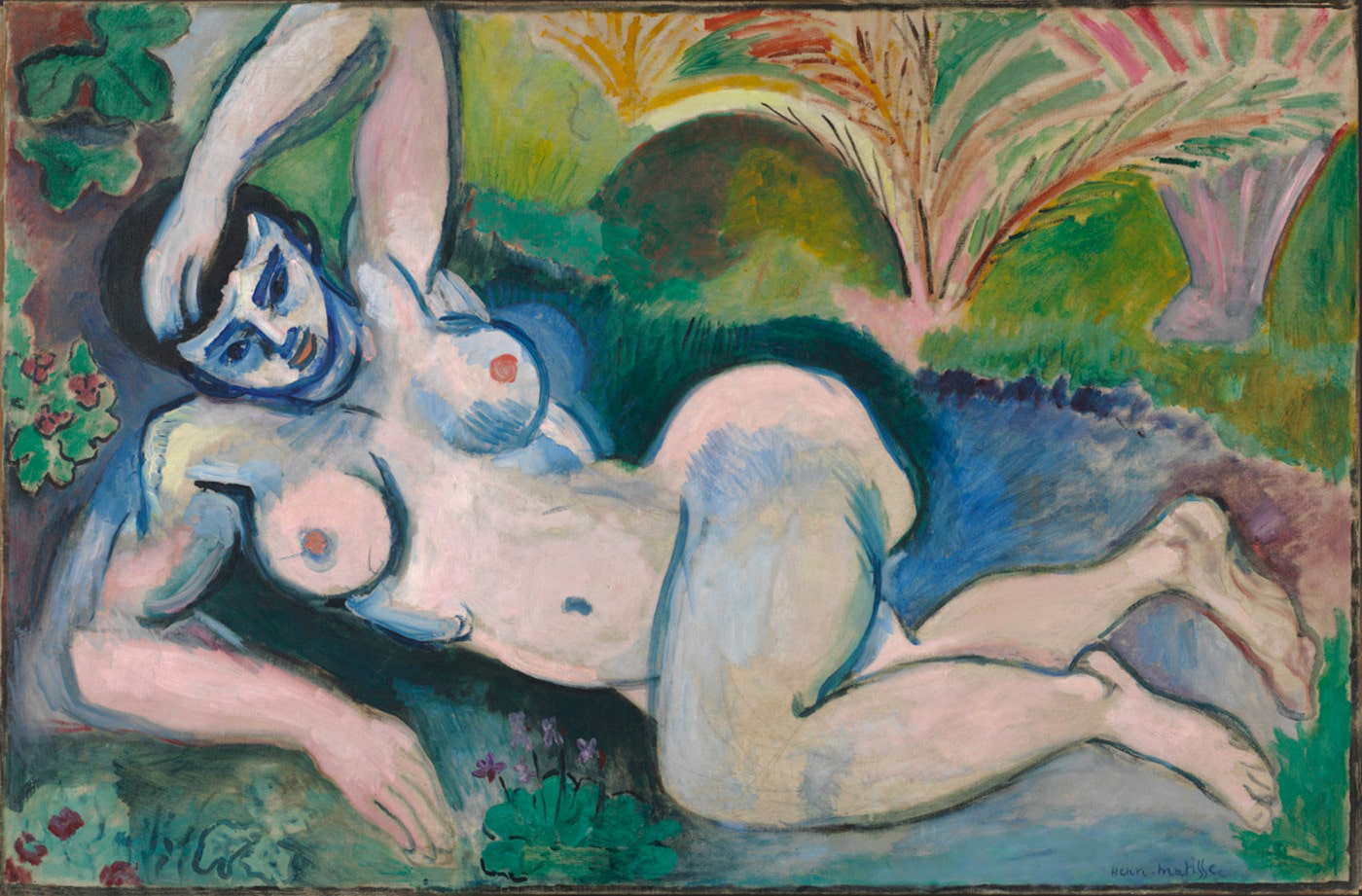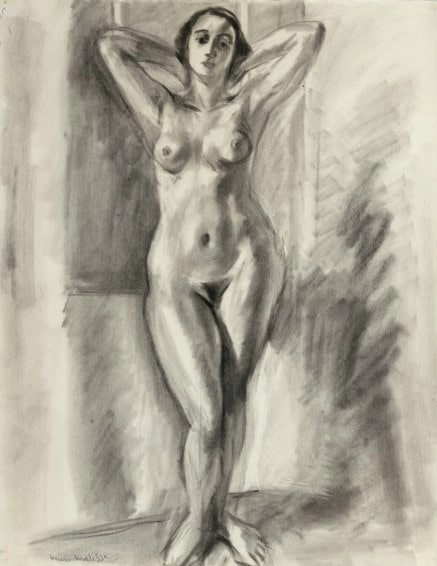Henri Matisse: 8 Outstanding Paintings by the French Fauvist
The French artist Henri Matisse is one of the most important painters of the 20th century. Besides painting, he worked in a variety of media such as sculpture and paper cut-outs.
Together with André Derain, Henri Matisse was the foremost figure of Fauvism, a style of painting that emerged in 1904. Les Fauves (French for “the wild beasts”) emphasized painterly qualities and strong color over realistic elements. Fauvism as a movement only lasted a few years, but this short period was later seen as a very influential art movement.
Henri Matisse was born in Le Cateau-Cambrésis in 1869. He first studied law and worked as lawyer’s secretary. It was appendicitis that confined him to bed for about a year and let him begin to draw and paint out of sheer boredom.
After that, Henri Matisse decided to study art at the École des Beaux-Arts in Paris in 1892-93. While Matisse’s artworks, in the beginning, were done in a very naturalistic style, he later went more and more experimental. Henri Matisse died in 1954. In his last years, the artist was tormented by serious illness.
Below you will find 8 outstanding paintings by Henri Matisse:
1. Femme au Chapeau (Woman with a Hat), 1905
The oil painting “Femme au Chapeau”, depicts Henri Matisse’s wife Amélie Matisse. It attracted a lot of criticism at its first exhibition at the Salon d’Autonome in Paris.
The painting, as well as the whole exhibition of works by Henri Matisse, André Derain, and Maurice de Vlaminck incurred the visitor’s as well as the critics’ displeasure. “Femme au Chapeau” was mainly criticized for its colorfulness but also because of its missing hierarchy of fore- and background and its wild rhythm of colors.
After the art critic Louis Vauxcelles called the artists Les Fauves (“wild beasts”), Fauvism as an art style was born. Later, the artists adopted the term Fauvism as their own.
Get the latest articles delivered to your inbox
Sign up to our Free Weekly Newsletter
2. La Raie Verte (The Green Stripe), 1905
Also known as “Portrait of Madame Matisse, is another portrait by Henri Matisse depicting his wife. The green stripe in the middle of the oil painting from which the title of the artwork derives, separates the face of Amélie Matisse.
This painting is an early example of Matisse’s understanding of color and light: The artist did not see light and shadow as dark and light spaces in a painting but defined them as spaces of different shades of color. With these shades and small spaces, he designed a lot of his paintings.
3. Le Bonheur de Vivre (The Joy of Life), 1905
Perhaps one of the most radical paintings of its time. Looking at it from a traditional perspective, one could see a pastoral scene, a bacchanal, or a dance of nymphs.
But there was a new element to this traditional iconography: the rhythm and dynamics in the painting. Pablo Picasso is said to have been that impressed by the masterpiece that he later tried to surpass it with its painting “Les Demoiselles d’Avignon”.
4. Nu bleu: Souvenir de Biskr (Blue Nude: Souvenir of Biskra), 1907
The painting was created by Henri Matisse after his visit to North Africa. Other than artists like Paul Klee, Matisse rarely painted on his trips but always tried to reflect his travels afterward.
The palm trees in the back are one and maybe the only reference to the city Biskra in Algeria. Also, this oil painting was very shocking for the art watchers of 1907. The main reason here is the way the female body is displayed, its physical massiveness, and its volumetric being.
5. Le Dessert Rouge (The Red Desert), 1908
The painting is an interesting work that tells a lot about the artist’s way of working. When the Russian art collector Sergej Schtschukin bought a painting called “Le Harmonie Bleu” at an exhibition at the Salon d’Autonome in 1908, it was delivered to him in a totally different way.
Because Matisse had not liked the contrasts of the painting, he without further ado changed its background in red and sent it to the buyer as “Le Dessert Rouge”. The Fauvist painting plays with impressionist elements.
6. La danse II (Dance), 1910
“La danse” is together with “La musique” one of two contract paintings for the art collector Sergey Shchukin. “La danse II” is the second version of the painting. It shows five women dancing on a hill. The motif is very organic and at the same time, it is reduced to a very condensed message.
There is a complementary contrast between the colors red and yellow in the foreground as well as blue and green in the background. While the motif of the dancing women can also be found in “Le Bonheur de vivre”, “La danse” today is a symbol for a turning point in Henri Matisse’s work.
7. Une vue de Notre-Dame (View of Notre-Dame), 1914
The painting is seen as a change in Henri Matisse’s oeuvre: as a starting point of an experimental period. During World War I, the artist began to paint a lot of black paintings that were very reduced in its motif as you can already see in “Une vue de Notre-Dame”.
8. Femme au manteau violet (Woman in a Purple Coat), 1937
The painting depicts a portrait of Matisse’s muse and later partner Lydia Delectorskaya. This painting is one of the most famous works of the artist’s late oeuvre.
Lydia Delectorskaya was the reason why Matisse’s and Amélie’s marriage broke up. This oil painting is nowadays seen as one of Matisse’s main bridges from Fauvism to Expressionism.
Auction Results for Artworks by Henri Matisse
These are four artworks by the French artist that were sold recently at Sotheby’s and Christie‘s:














